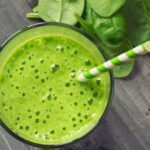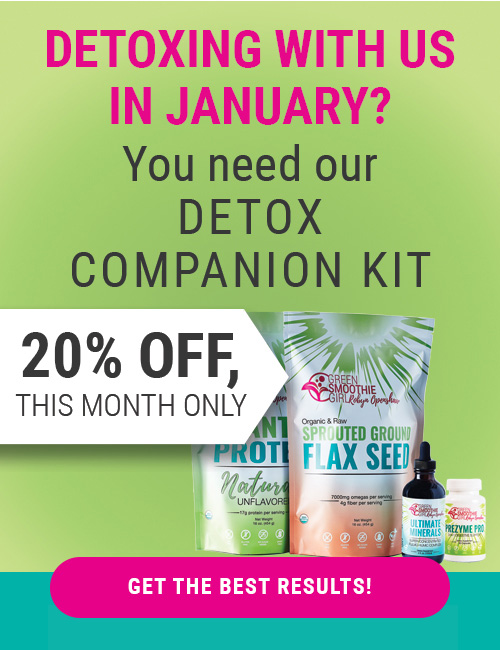Can Nail Polish Be Healthy? Don’t Paint Your Nails Again Without Reading This!
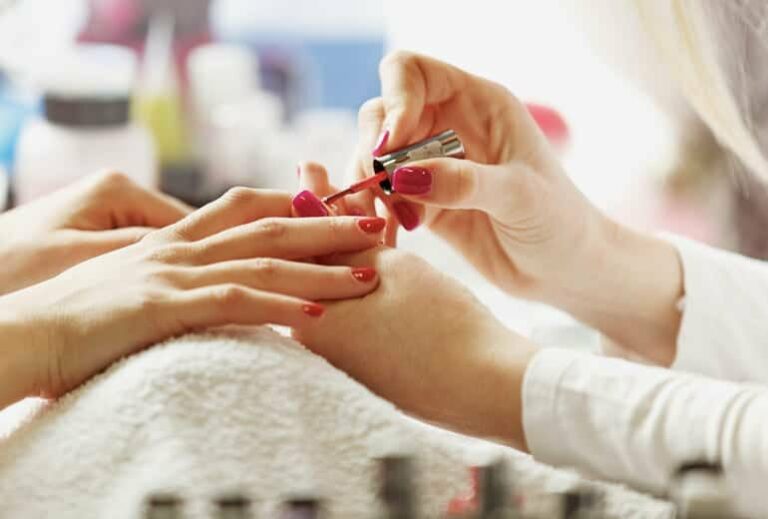
Last year, getting a pedi at my salon, the manicurist sold me on a fabulous product called "gel toes." It lasts so much longer than regular nail polish, she said. It doesn't chip off.
Here's the dark side, I learned, when I returned a month later. Do you know how they get that stuff off?
They make you soak your toes in acetone for 15 minutes! Acetone is the primary ingredient in nail polish remover, but it’s also paint thinner.
The small amounts of chemicals on our skin, from lotions, cosmetics, and nail polish and removers, add up to serious hormone disruption, which affects everything about your health.
In this post:
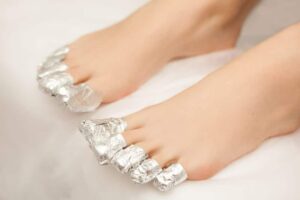
"Gel Toes" are removed by soaking your toes in toxic acetone for 15 minutes!
Skin is not the barrier we may believe it to be; through pores, hair follicles, and sweat glands, it absorbs everything that is applied to it. It’s also the largest detoxifying organ in your body!
Researchers from Duke University and Environmental Working Group tested women for triphenyl phosphate (TPHP)—an endocrine-disrupting chemical found in nail polish—about 12 hours after they had their nails painted. 100 percent of the participants showed evidence of this toxin in their bloodstream, half a day later.1
These chemicals that are absorbed into your bloodstream and lymphatic system then flow to the rest of your body and lodge themselves in organs and tissues where they build up and lead to toxicity.
I love how long-lasting “Gel Toes” are, as the ladies in the salon call it. But I’m not going to EVER soak my nails for 15 minutes in acetone again. That’s 15 minutes of pouring paint thinner into my bloodstream!
Sometimes the “price of pretty” is too high.
Why are Most Nail Products Toxic?
Did you know that the EPA classifies nail polish and nail polish remover as a household hazardous waste? In fact, they recommend nail polish remover be saved for household hazardous waste collection! And yet, we put it on our bodies, including our young daughters’.2
The worst part? Some of these chemicals are known to cause hormone disruption affecting both reproduction and development. Alarming for adults, but what about young girls and teens whose bodies are still developing?
A survey conducted by analysis company Mintel and reported in Nails Magazine revealed that 97 percent of American girls between the ages of 12 to 14 use nail products.3
Let’s find out what chemicals to steer clear of and what the less-toxic alternatives are.
The Top 4 Nail Polish Toxins to Avoid
1. Formaldehyde
Why do companies put an ingredient that is used to embalm dead bodies into our nail polish? The answer: It is used as a nail hardener and preservative.
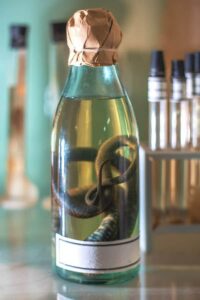
Formaldehyde can cause cancer so you probably shouldn't put it on your nails.
Tosylamide/formaldehyde resin is another ingredient used in nail polish to make them shiny and long lasting.
The International Agency for Research on Cancer classifies formaldehyde as a known carcinogen, based on published evidence.4
2. Dibutyl Phthalate (DBP)
This endocrine disrupter is used in nail polish to minimize chipping. The State of California has classified DBP as a reproductive and developmental toxicant. The EU has banned its use in cosmetics and personal care products.5
But the FDA has done nothing except conclude that, yes, elevated levels of this chemical have been found when women, children and infant’s urine was tested; however, “FDA determined that there wasn’t a sound, scientific basis to support taking regulatory action against cosmetics containing phthalates.”
Don’t wait to start addressing the chemicals in our products until the FDA deems them unsafe. (Remember Troglitazone? It was a diabetic drug approved by the FDA, who finally, three years after the UK did, pulled it off the market because it causes liver failure. Our government is often slow to protect us.)
DBP has been shown to affect the reproductive system in fetuses when pregnant mothers are exposed.5 Animal studies have revealed that it can also damage the liver, kidneys and lungs. Canada, the E.U. and the U.S. banned the use of DBP in children’s toys and care supplies because of health concerns, including both liver and kidney failure in young children.6
3. Toluene
This nail polish ingredient creates that smooth finish. It is also found in nail polish removers and is responsible for their pungent scent (there’s a reason they smell like gasoline, since toluene is a gasoline additive).
Its fumes are highly toxic and haves been associated with neurological damage, impaired breathing, impaired fetal development and even blood cancers such as lymphoma.8, 9
Toluene is listed on California’s Prop 65 list of chemicals as harmful to fetal development. The EU has restricted the use of toluene in personal-care products and has advised that pregnant women and children should not be exposed to its fumes.7 But in the United States, its use is still permitted in nail products.
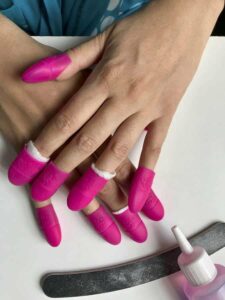
Toluene is used in nail polish and nail polish remover and has harmful effects on pregnant woman and children.
4. Camphor
This product is added to nail polish in order to give your nails that glossy, shiny appearance. You’re probably familiar with this ingredient as it can be found in many remedies such as vapor rubs to reduce cold symptoms. It is a natural ingredient that comes from the Cinnamonum camphora tree.
But even natural ingredients can cause adverse effects, especially when they are isolated and processed. In high doses, camphor has been associated with both birth defects and respiratory disease.11
Healthy Nail Polish Tips
Unfortunately, even nail polishes that claim to be “toxin free” may be mislabeled. When researchers from California’s EPA agency sent 25 nail products to an independent lab to test for the “big three” toxins (formaldehyde, toluene, and DBP), only two had no trace of any.10
So, if you can’t trust labels, how do you determine if your nail polish is toxic or healthy?
One source that I trust is EWG’s Skin Deep Cosmetics Database. They list products that are EWG Verified and offer quick tips for safer cosmetics and a comprehensive overview of nail polishes on the market.
For me and my daughters, I found a bunch of non-toxic polishes from these companies:
- Acquarella—This non-toxic brand has over 50 colors to choose from. They are all water-based with no traces of dangerous chemicals. Tip: Water-based nail polishes can be removed with rubbing alcohol—much better than toxic acetone nail polish removers!
- Drs Remedy—This vegan polish is infused with organic tea tree oil, biotin, garlic extract and lavender. It has no toxic ingredients. Tip: If the polish says 5-Free, that means it is free of formaldehyde, DBP, toluene, formaldehyde resin, and camphor, which are 5 of the worst ingredients in most polishes. This product was created by two certified podiatrists and is the only polish that’s been awarded the American Podiatric Medical Association seal of approval. It contains natural anti-fungal ingredients which make it a good choice for those suffering from toenail fungus.
- Honeybee Gardens—This brand comes in a wide variety of colors and has a low rating on the EWG database. For instance, their Honeybee Gardens WaterColors Vintage Merlot nail polish comes in at a 2 on a scale of 1 to 9, with 1 being the best possible rating.

Painting your child's fingernails can be fun, but if you don't want to expose them to toxic chemicals, use nail polish with all natural ingredients.
- SpaRitual—Their products are vegan free, cruelty free, and 12-free, which is impressive. They have some beautiful, unique colors, including some that sparkle. My girls love sparkles. If you check out their product online, you’ll notice that they’ve received some great reviews.
- Piggy Paint—This is a great polish that is marketed specifically for kids and is one of the lower priced non-toxic nail polishes around. Several online reviews recommend this nail polish specifically for kids and not so much for adults.
While non-toxic nail polish can be a little more expensive, if enough of us buy it, we can be a part of the movement to bring the price down and the supply up! That way, we are being good citizens of the green world AND decreasing our own toxic body burden.
In order to inspire and help you choose nail polishes and other cosmetics that are free of toxins, I’ve created this free, printable Toxic Cosmetics Ingredients wallet card.
It will provide that quick information you need when shopping so that you can ensure you’re buying the healthiest (and least toxic) cosmetics for you and your family.
Simply print it, cut it out, and put it in your wallet. You can consult it, when shopping, until these ingredients to avoid are in your memory bank and you’re eventually a “pro” who can consult to others--your daughters and granddaughters, for instance--to help them make healthier choices!
Grab your Toxic Cosmetics Ingredients wallet card here!
Read next: Ridges, Bumps, Or White Spots In Your Fingernails? What Your Nails Say About Your Health

Disclosure: This post may contain affiliate links that help support the GSG mission without costing you extra. I recommend only companies and products that I use myself.
Resources
- Hansen, Sally. Duke-EWG Study Finds Toxin Nail Polish Chemical in Women’s Bodies. EWG. https://www.ewg.org/release/duke-ewg-study-finds-toxic-nail-polish-chemical-women-s-bodies#.Wx1VtEgvzcs
- Disposal Guide to Household Hazardous Wastes. National Service Center for Environmental Publications. EPA.
- Rupert, Tracy. Teen Scene. Nails Magazine. 08/2014. http://www.nailsmag.com/article/107836/teen-scene
- IARC Classifies Formaldehyde as Carcinogenic to Humans. International Agency for Research on Cancer. Press Release. 06/2004. https://www.iarc.fr/en/media-centre/pr/2004/pr153.html
- Dibutyl Phthalate. EWG’s Skin Deep Cosmetics Database. https://www.ewg.org/skindeep/ingredient/701929/DIBUTYL_PHTHALATE/#
- Canada proposes six chemicals ban in toys, new lead limits. Medical Press. 06/2009. https://medicalxpress.com/news/2009-06-canada-chemicals-toys-limits.html
- Toluene. Chemicals Considered or Listed Under Proposition 65. OEHHA CA Gov. https://oehha.ca.gov/proposition-65/chemicals/toluene
- Toluene. PubChem Open chemistry Database. U.S. National Library of Medicine. https://pubchem.ncbi.nlm.nih.gov/compound/toluene#section=Top
- Miligi L. et al. Occupational exposure to solvents and the risk of lymphomas. Epidemiology. 09/2006. https://www.ncbi.nlm.nih.gov/pubmed/16878041
- Doheny, Kathleen. Is Your Nail Polish Toxic? WebMD. 04/2012. https://www.webmd.com/beauty/news/20120411/is-your-nail-polish-toxic#1
- Ray, Linda. Camphor Dangers. Livestrong. 08/2017. https://www.livestrong.com/article/289406-camphor-pregnancy/
Posted in: Detox, Lifestyle, Natural Products, Relationships, Reviews









